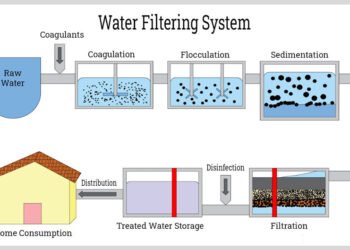Maintenance and Operation
Fiberglass sheets are durable and versatile materials widely used across industries and for DIY projects. However, like any material, they require proper care and maintenance to ensure longevity, functionality, and safety. Whether used in construction, automotive, or cable systems, understanding how to properly maintain and operate fiberglass sheets is key to maximizing their performance. Here are some key guidelines for the maintenance and operation of fiberglass sheets:
Cleaning and Surface Care
Fiberglass sheets can accumulate dust, dirt, or debris over time, which may affect their appearance and performance. To clean fiberglass sheets:
- Use Mild Soap and Water: For regular cleaning, a mixture of mild soap and warm water is usually sufficient. Avoid abrasive cleaners that could scratch the surface.
- Avoid Harsh Chemicals: Harsh chemicals or solvents may damage the protective coating or surface finish of fiberglass sheets. Stick to products designed for use with fiberglass materials.
- Dry with a Soft Cloth: After cleaning, always dry the fiberglass surface with a soft, lint-free cloth to prevent water spots or streaks.
Inspection and Structural Integrity
Regular inspection is critical to ensuring the structural integrity of fiberglass sheets, especially when used in load-bearing applications like cable ladder or automotive panels.
- Check for Cracks or Chips: Look for any visible cracks or chips that may compromise the sheet’s strength. Even small cracks can spread and lead to failure under stress.
- Inspect the Edges: The edges of fiberglass sheets can be prone to damage, so it’s essential to check them periodically for any signs of wear, particularly where the material has been cut or shaped.
- Reinforcement: In applications where additional strength is required (such as in boatbuilding or structural components), reinforce fiberglass sheets with materials like Chopped Strand Mat (CSM) to enhance durability.
Handling and Operation
Fiberglass sheets need to be handled with care to avoid damage during installation or operation.
- Avoid Impact: When transporting or installing fiberglass sheets, avoid dropping or impacting them. While fiberglass is strong, it can crack or splinter upon sudden impact.
- Proper Cutting Techniques: Use the right tools for cutting fiberglass sheets, such as a fine-toothed saw or a rotary cutter. Always wear protective equipment to avoid exposure to fiberglass dust.
- Temperature Considerations: Fiberglass can be sensitive to temperature extremes. In hot conditions, ensure that the sheets do not warp or become brittle due to prolonged exposure to high heat. Conversely, in freezing temperatures, fiberglass sheets may become more rigid and susceptible to cracking.
Repairing Damaged Fiberglass Sheets
Fiberglass sheets are generally easy to repair if damaged, provided you take the right steps.
- Surface Repairs: For minor surface damage like scratches or small chips, you can fill in the affected areas with a fiberglass resin or repair putty. Sand down the repair once it cures to achieve a smooth finish.
- Cracks and Holes: For larger cracks or holes, apply fiberglass cloth or Chopped Strand Mat (CSM) in combination with resin to restore the sheet’s integrity. Ensure the area is clean and dry before applying the patch.
- Polishing: After repairs, fiberglass sheets can be polished to restore their original gloss and smooth finish. Use a suitable fiberglass polish and a soft cloth for the best results.
Preventing Environmental Damage
Fiberglass sheets can be susceptible to environmental factors such as UV radiation, moisture, and chemicals, which can degrade their performance over time.
- UV Protection: To prevent UV degradation, consider applying a UV-resistant coating to fiberglass sheets, especially for outdoor applications such as boat hulls or exposed building materials.
- Moisture Control: While fiberglass is resistant to water damage, prolonged exposure to moisture can weaken its structure. Ensure that fiberglass components, such as cable ladder systems, are installed in a way that minimizes direct exposure to water or humidity.
- Chemical Exposure: In industrial settings, avoid contact with corrosive chemicals, as they can damage the resin matrix of fiberglass sheets. Store fiberglass materials away from harmful substances.
Storage and Handling During Transportation
Proper storage and transportation are essential to prevent damage to fiberglass sheets before they are even put into use.
- Store in a Dry, Cool Place: Fiberglass sheets should be stored in a dry, cool area to avoid exposure to excessive heat, moisture, or UV light. Storing them in a well-ventilated area will help maintain their integrity.
- Keep Sheets Flat: If possible, store fiberglass sheets flat to prevent warping or bending. Use protective covers to prevent dirt and debris from accumulating on the surface.
- Transport Carefully: When transporting fiberglass sheets, make sure they are securely fastened to prevent shifting or bending during transit. Use padding or protective materials to avoid scratches or cracks.
Long-Term Care and Replacement
Over time, fiberglass sheets may show signs of wear, particularly in high-stress applications. Keep an eye on their performance, and consider replacing sheets when they show significant signs of damage that can no longer be repaired.
- Regular Monitoring: For installations like cable ladders or automotive panels, inspect the fiberglass sheets regularly for signs of fatigue, damage, or failure.
- Scheduled Replacements: In high-demand environments, set a schedule for replacing older fiberglass sheets to ensure continued safety and performance.












